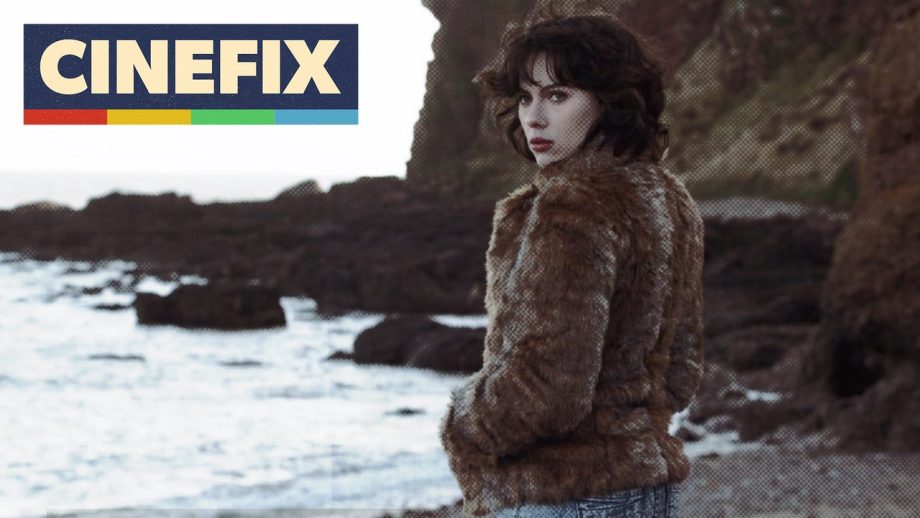It’s a big, scary world out there, but that’s never stopped us from some additional big screen thrill-seeking. While some movies are scarier than the sum of their parts, we’re getting a little more granular with this list and breaking down individual moments…but right off the bat, there’s a caveat. No moment exists in a vacuum; every scene is the product of the context laid down before it and the consequences that follow it. This might be doubly true for scary moments. A good scare needs the ingredients arranged correctly in front of it and the tension built, and a great scare will linger long after it’s left the screen.
And just so we’re on the same page from the jump, I’m not talking exclusively about horror movies here. Admittedly, most of this list will be made up of that spookiest of genres, but one of the great things about scary moments is that they can drop in when you least expect them. A truly scary movie moment can creep up in a dramatic chamber piece just as easily as it can in the middle of Slasherpalooza 7: The Blood Bath-ening…sometimes more so.
So for each of the categories in our taxonomic breakdown of individual scares on film, I want to focus on at least one that’s from a not-traditionally-considered-horror film. Now, with all that being said, let’s talk about scaring the shit out of an audience with the old reliable jump scare!
10. The Jump Scare
Built on an instantaneous release of tension, the jump scare is maybe the purest example of set-up and payoff that cinema has to offer. You can go back 100 years to find a good jump scare in The Phantom of the Opera, or maybe even the original horror movie – that train that people thought would run them over in the theater. There’s a beautiful simplicity to these that, when executed properly, give a dose of the unexpected just when you’re starting to think the coast is clear. Some more recent favorites are the boy in the attic in REC, panning around almost 360 before … FUCK that kid… the lawnmower scene in Sinister, making us quietly wait until … GOD DAMMIT what the… there’s the famous Texas Switch of shock, luring us in with a kid running to his … SHIT he turned into a different guy…
Where non-horror movies are concerned, the old reliable jump scare is standing by to cash in a bit of tension between a mayor and a good cop when a fake Batman slams into the window in The Dark Knight. Then there’s the jewelry-crazed uncle and his reluctantly adventurous nephew crossing paths again in The Lord of the Rings: The Fellowship of the Ring.
But my favorite types of jump scares don’t turn the screws with tension, but with safety. A quick personal aside: My daughter (who was 8 at the time) and I were watching The Lost World, and because I’m very likely a pretty lame dad, I prefaced the hell out of the movie so she wouldn’t be scared. But during the escape from the raptors sequence, when Julianne Moore checks under the shed to be sure the coast is clear only to find out shortly thereafter that no, the coast was very much NOT clear, I explained the nature of that particular jump scare in a way that I’m sure ruined movies for my poor kid.
First of all, we’re in the middle of a tense scene as it is. This particular moment is a little bit of a chance to catch our breath, with at least a wall between us and the carnivores. We’re presented with a means of another escape by digging under the wall. We watch as Moore checks underneath it, confirming that it’s a safe space. The camera pans away from it quickly…and that’s key. We take our eyes off the safe space for a split second, only to find when we pan back to it… JUMP SCARE! Safety and respite are briefly teased before being pulled out from under us like our faith in Man’s ability to respect the limits of Creation.
A few days later, I overheard my daughter explaining jump scares in her own words to her cousin, and I’ve honestly never been more proud, but the point here is that jump scares are a foundational, cleanly simple place to start our look at what makes a movie moment well and truly scary.
That same pattern of tension + momentary safety + rug pull can be found in another Spielberg gem, and our number 10 pick, the “Ben Gardner’s boat” scene from Jaws.
What’s great about this scene is the lengths taken to establish a sense of relative safety surrounding a nighttime swim to investigate the hull of the well-known fisherman’s boat. Some of it is even rooted in character. We’re still getting to know Richard Dreyfuss’s Matt Hooper, but his expertise has been completely established in the moments leading up to THE moment. We know he’s smart and respectful of the shark terrorizing Amity Island, but here we also see his capability. He’s got gadgets a-plenty on his boat, the backing of the film’s primary hero, and a confidence that we get to share as he dives in.
We also know that there is definitely a shark out there. The tension looms just under the surface, as it does for the rest of the film and the famously camera-shy antagonist. But Spielberg’s greatest misdirect with this scene is the tooth. Finding a massive great white tooth lodged in the hull is frightening enough, surely — we think — and that’s what this scene has in store for us. It’s the first visual proof of the scale of the problem but … NOPE.
Just when we think the scene is done with us, poor Ben Gardner’s head pops up to say hi. First of all, anything jumping out at us in this moment makes for a good jump scare, but it’s not the shark we were afraid of when we first jumped into the water, which accomplishes a few things besides just the scare. Most importantly, it maintains Hooper’s credibility. Had he confidently dove into the water and come face to face with the shark, he’d look pretty stupid for the rest of the film, and we can’t have that. But structurally, in the narrative of the movie, it had been a solid 20 minutes since the last shark sighting, and it’ll be another 10 or 12 before the next attack. We needed this tension and this scare to keep us on the edge of our seats between the more traditionally scary moments.
On top of the way this jump scare is executed, it’s a jolt of adrenaline to the audience at a spot in the runtime that really needed it, and the movie on the whole is better for it.
9. The Slow Burn Scare
Moving on from the jump scare — the monster that takes you by surprise — the natural place to go next is to the scare that you see coming. These are the slow burn scares, the ones that sneak up on you even though they’ve been slowly walking your way this whole time, like It Following in the background, or each time A Girl Walks Home Alone at Night. These are films filled with moments of creeping dread, moments like a column silhouette turning to face us in The Night House, or the cell phone footage discovered in Lake Mungo. For a non-horror movie, think also about the critical scene on the highway at night during Nocturnal Animals, and how the result of the encounter was so clear the entire time it was working its way towards the screen. They’re slow moving terrorizers that you can’t look away from.
The best of these, by their very nature, take a while to organize. “Slow” is literally half of this category’s name, and to distill them down to a moment is a mistake, as we must also include the long build-up. The best of these, to risk a cop-out at number 9, take the whole movie to build, and few have done it as well as 1973’s The Wicker Man.
The Wicker Man is such a fun folk horror film, but it’s a little hard to watch it now without having at least a notion of how it’s going to play out. It’s been homaged, imitated, and literally remade enough that even if you’ve never seen it, you know it. That’s why I really want to highlight this movie here, even more than the craft of the film.
The moment when Sergeant Howie realizes his doom is imminent is only just a few minutes from the end, but it’s the result of an entire film’s worth of build-up. The paganism of the island is something he’s known about for his entire stay, something he’s seen coming with every quirky Summerisle inhabitant he encounters, something they’ve been honest with him about since Christopher Lee’s charming Lord Summerisle told him about it all upon their first meeting. And for us in the audience, this set-up and execution are as familiar a trope as you could ask for, but it’s important to remember that it’s familiar because The Wicker Man did it so well.
The movie is a cult favorite for a reason, and it’s all clear in these final moments before desperation sets in. The policeman thinks he’s done his job, but the rug is pulled out from under him just as quickly. Set on a cliff overlooking the ocean, the scene finds him trapped between crashing waves and the calm matter-of-factness of the cult that’s about to sacrifice him to their pagan gods. This is the only end that Howie was ever meant for; it was deliberately plotted and slowly revealed for the entire runtime of the film, leaving us in the helpless shoes of a doomed man.
8. The Terrifying Image
To elicit any emotion on screen, at the intersection of all the trades required to make a movie work, these scary movie moments need to have their nuts and bolts in order. And because we’re nothing if not big ol’ marks for film craft here, let’s start breaking down some moments based on individual parts, starting with the visuals.
These are the moments that just look scary. There are films that lean on production design, like the Pale Man’s dinner table in Pan’s Labyrinth, or venturing through the inner workings of a mad man in The Cell… or any of Tarsem Singh’s work for that matter. Also, a quick aside here: I’d like to advocate for stop motion as a preeminent vehicle for imagery that’s scary outside of all context, with films like The Wolf House made in the stop-motion equivalent of a single take and created entirely out of duct tape, or animation pioneer Phil Tippett’s magnum opus, Mad God.
But to be honest, terrifying visuals really sing loudest and most disturbingly in non-horror movies. More than any other category we’ll talk about here, a scary visual can REALLY pop in a film where you might not be expecting it. This is where the term Lynchian really comes in handy, as nearly all of the late auteur’s work qualifies as not-really-horror-but-scary-as-hell-anyway, from a truly bizarre attempt at cutting a chicken, to Dean Stockwell karaoke, and beyond. For me though, when I think of scary on-the-look-alone, I always go back to The Cook, The Thief, His Wife and Her Lover.
Peter Greenaway’s 1989 film is, on paper at least, fairly straightforward. An obnoxious and powerful criminal strong-arms his way into a partnership with a gourmet chef while the crook’s wife falls for a bookish regular at the restaurant. It’s all right there in the title. However, the presentation of that story is anything but straightforward, and certainly not anything that would immediately fall into the scary movie bucket.
But the entire runtime of the film is otherworldly, and because I won’t be calling the whole movie a “moment,” I want to focus on the first tracking shot through the back of the house at the restaurant. It’s not the first shot of the film, but it’s still “the opening” — a tracking shot that establishes something truly unsettling. There’s a formality to these proceedings, an artifice that is so front and center, it’s impossible not to notice or think, “what the hell is about to happen here?”
From the eerie falsetto of a young boy singing, lost in his own thoughts, through the bullying buffoonery of Michael Gambon’s Spica and the quiet resignation of the Cook, very aware of the trap he’s in with instinct enough to pick his rebellious spots. The smoke, the dark and damp back alley vibes, the duck feathers floating through the air like a gentle snow — all of it is filmed in a slow and steady tracking shot.






